If you’ve ever visited a Japanese sushi restaurant, there’s a possibility that you’ve seen most of the sushi rolls have an ingredient known as unagi, also known as Japanese eel.
Unagi is Japanese sushi eel or “freshwater eel” and it’s an essential part of Japanese cuisine. Unagi has a mouthwatering taste, especially when marinated and grilled.
In addition to this, Japanese sushi eel is particularly nutritious and comes with numerous health benefits.
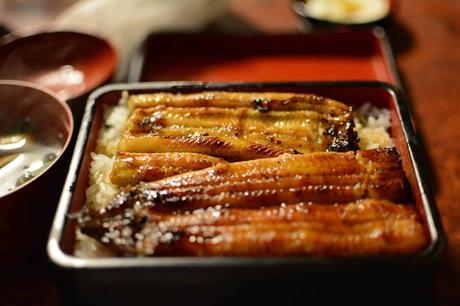
Even though the eel has a close resemblance to a snake, it’s just a particular type of fish—and a very tasty one.
Many people have a natural revulsion to the thought of eating eel, and this also includes the most passionate sushi lovers. They always shy away from eel.
However, when you come across a normal eel dish, you’ll be surprised that it resembles any other fish meal.
And when you taste the soft meat of Japanese eel, you’re likely to change your whole idea of eating unagi!
What does Japanese eel taste like?
Well, if you’ve ever eaten unagi, then you’re aware of its subtle, yet sweet flavor, which is a bit chewy, and somehow reminiscent of raw salmon.
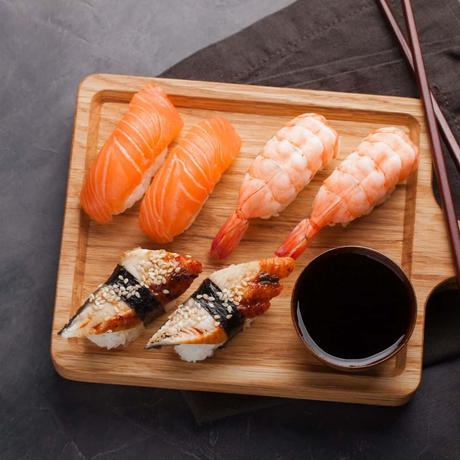
Other people say that its taste has a close resemblance to catfish.
But what you need to note is that unagi always has a good taste when served alongside an accompanying sauce or seasoning.
The combination of eel, rice, and other sushi ingredients is delicious.
An important thing you need to know is that eel’s blood is toxic and poisonous, so you should never eat raw eel, as it can kill you. This is why the eel in Japanese dishes is always cooked.
Unagi readily absorbs the flavors of different sauces that are drizzled over it or even served on the side for dipping. One of the most popular condiments is eel sauce.
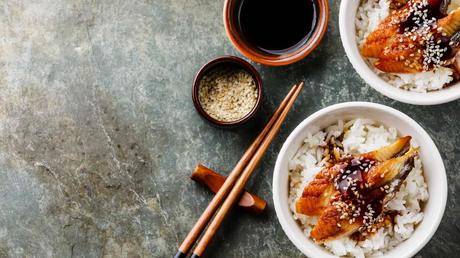
This sauce is thick, sweet, and savory, which gives unagi an amazing taste of umami, as well as other maki rolls.
Also, the taste of unagi can be affected by how it’s prepared and served. Smoked, deep-fried, or grilled are some of the most popular preparation methods for eel. Traditional unagi dishes are usually butter-fried, marinated, and then grilled, or served on top of the donburi rice bowl.
In Japan, unagi is an important part of the traditional cuisine, to the extent that there’s a special day that’s dedicated to unagi! It’s called Doyo no Ushi no Hi and it’s a day each summer when people eat eel dishes.
Unakyu or eel sushi rolls are also increasingly popular at restaurants.
Where does sushi eel come from?
Most sushi eel comes from eel farms. However, the best-tasting eel comes from the wild, meaning freshwater or seawater.
Japan is the top consumer of eels. Most of the eel is raised on fish farms around the country because the demand is so high.
Specialty dishes rely on wild, fresh eel. These are called “glass eels” and they’re caught in coastal waters and rivers while young.
Eels are a threatened species so conservation efforts are underway.
In the wild, eels eat shrimp, crustaceans, aquatic insects, and small fish. They have a healthy diet and are considered an overall healthy food.
Eel sushi rolls: Unakyu
When we talk about sushi eel, we’re describing unagi, which is the term for freshwater eel. But did you know that sushi rolls with eel are also popular?
So you’re probably wondering if eel is a sushi fish? Well, yes. The Japanese use eel to make sushi.
The process is the same as with other types of fish and seafood; the only difference is that eel’s always cooked and never served raw.
The sushi roll version of unagi is called unakyu and it’s a sushi roll with well-cooked eel and cucumber, usually served with tare sauce.
In eel sushi, chefs prefer to use freshwater eel (unagi) most of the time. In some cases, they use anago, which refers to seawater eel.
Also read: all you wanted to know about sushi-grade tuna
What are the health benefits of unagi?
As we highlighted earlier, unagi comes with tons of health benefits, as well as good nutritional values.
The fact that the Japanese consume unagi is probably another reason why Japan is one of the healthiest nations in the world.

First, you need to note that unagi contains a wide variety of minerals and vitamins, and this includes vitamins A, D, E, B1, B2, B12, and phosphorus.
Phosphorous is essential to a healthy body since it assists in balancing the pH levels in our bodies. In addition, it assists in improving metabolism and digestion, and also allows our bodies to absorb minerals better.
Moreover, eel has a high amount of omega-3 fatty acids. It helps improve blood pressure, reduces cholesterol, and even reduces the risks of arthritis and diabetes.
Unagi is low in sodium, high in potassium, and doesn’t contain any sugar.
It’s a low-calorie food. One piece of eel has about 100-300 calories, depending on how it’s cooked. If you eat it as nigiri (eel on rice balls), you’ll double the calories.
In addition to these health benefits, unagi has other health benefits that are more specific to women.
These benefits include:
- Reducing menstrual pain
- Reducing wrinkles and improving skin health
- Slowing down tumor growth
- Lowering the risks of breast cancer
- Improving blood flow to the brain
- Boosting memory
- Reducing any chances of dementia
Here are a few recipes for Japanese eel.
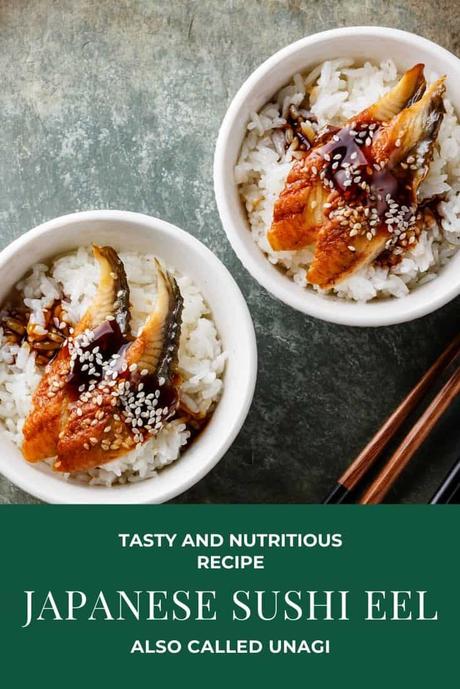
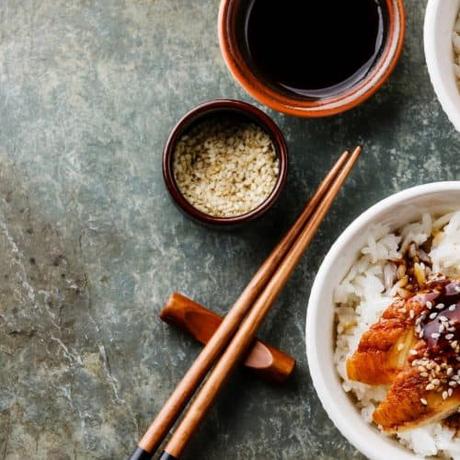 Print
Print
Sushi eel unadon recipe
This is a classic Japanese dish that contains steamed rice. It's topped up with grilled eel fillets that are glazed with a sweetened soy-based sauce, also known as tare, and then caramelized over a charcoal fire (preferably). Course Main CourseCuisine JapaneseKeyword Eel, Rice Prep Time 10 minutesCook Time 25 minutesTotal Time 35 minutes Servings 4 people Author Joost Nusselder Cost $25Ingredients
- 2 fillets (320g) unagi (eel)
- 1 Japanese sansho pepper for topping (optional)
- 4 cups white rice
Unagi sauce (tare)
- ¼ cup soy sauce
- ¼ cup mirin
- 2½ tbsp brown sugar
- 1½ tbsp sake
Instructions
Making the unagi sauce
- In a small saucepan, add sake, brown sugar, and mirin. Then turn on the heat to the medium setting and whisk your mixture.
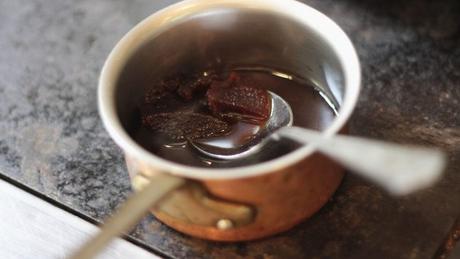
- Add the soy sauce and allow it to boil. Once it's boiled, reduce the heat to a low setting and then allow it to simmer for an additional 10 minutes. As you come to the end of the cooking, you should be able to see more bubbles.
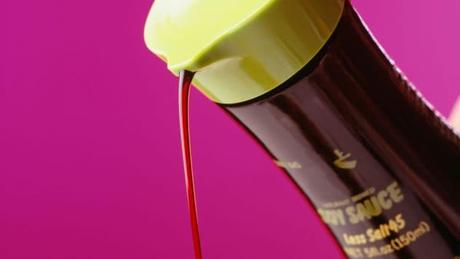
- Now, you can turn off your stove and allow the sauce to cool. You'll realize that the sauce has thickened as it cools. This sauce can be kept in an airtight jar for 2 weeks, but it must be refrigerated.
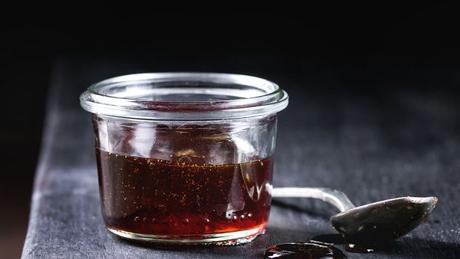
Preparing the unagi
- First, you'll need to preheat your oven to broil at 550 degrees F or 290 degrees C for around 3 minutes. As your oven preheats, cut your unagi in half or thirds. This should depend on the size of your serving bowls.
- Cook the rice in a cooking pot or rice steamer for about 8 minutes.
- Line your baking sheet with aluminum foil and then brush a light layer of oil on it. Place the unagi on the baking sheet.
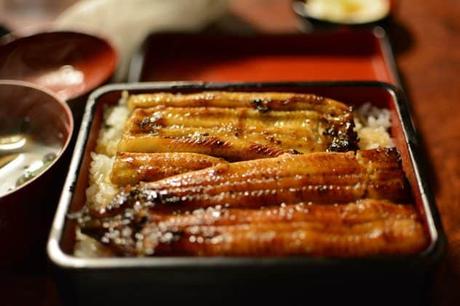
- Place the baking sheet on the middle rack of the oven and then broil on high heat for around 5 to 7 minutes. You don’t need to flip it.
- After the 7 minutes, take out the unagi, and then brush it all over with the sauce.
- Continue to broil for an additional 30 to 60 seconds, or until you see some bubbles on top of your unagi.
- Serve your cooked rice in a bowl and then brush or pour unagi sauce on top of the rice. Then, serve unagi on top of the rice and brush or pour more unagi sauce. You can also sprinkle some sansho, but this is optional.

- Serve immediately.
“Unadon” is a portmanteau of “unagi” (eel) and “donburi” (rice bowl dish).
The recipe requires a preparation time of 10 minutes and a cooking time of 10 minutes.
If you love Japanese food, your mouth will definitely water as you go through this recipe!
Recipe notes:
This is for the unagi sauce/tare: this is a third of the original recipe since it’s meant for 2 fillets.
Here’s the original unagi sauce recipe.
Ingredients
- Soy sauce – ¾ cup
- Mirin – ¾ cup
- Sugar – ½ cup (125 g)
- Sake – ¼ cup
Directions
- Mix all the ingredients in a saucepan.
- Allow the sauce to simmer for 20 minutes or until it thickens, rather than the 10 minutes indicated above. You can store your unagi sauce in a refrigerator.
Reheating your sauce: use a frying pan or an oven broiler. In case you don’t have an oven, consider using an oven toaster.
Also read: teppanyaki seafood recipe that’ll make your mouth water
Unagi don recipe
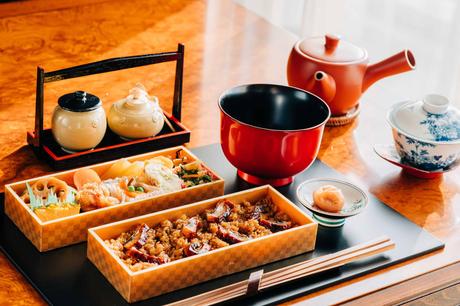
Ingredients
For the sauce
- Sugar – 2 ½ tbsp.
- Cooking sake – 1 ½ tbsp.
- Soy sauce – 4 tbsp.
- Mirin – 4 tbsp.
You’ll also need:
- Rice – 200 g
- Water – 260 ml
- Eel fillets – 2 (skin-on)
Directions
- To prepare the sauce, you’ll need to mix the sake and mirin in a small saucepan, and then boil. Once it’s boiled, reduce the heat, add sugar, and stir until it’s completely dissolved. Then, add the soy sauce and allow it to boil. Reduce the heat and allow the sauce to simmer for around 10 minutes or until it thickens. When done, turn off the heat and then set it aside to cool.
- As your sauce cools, start preparing and cooking your rice; you can use your preferred rice preparation method. One of the recommended methods of cooking 200 g of rice is to boil it with 260 ml of water once you’ve washed it under cold running water.
- Next, preheat your grill to around 250 degrees C. Mostly, eel fillets come sliced in half lengthwise. So you’ll just need to cut the eel fillets in half widthwise so that they can fit on top of the rice bowl.
- Next, line your baking with aluminum foil. Place the fillets on top of the baking sheet and then brush them with some vegetable oil. Put the baking sheet in your oven and then grill for around 5 to 7 minutes, or until they’ve turned brown.
- Remove your fillets from the oven and then brush them with the unagi sauce carefully, and make sure that you spare some sauce for later use. Put the fillets back on the grill and grill for an additional minute.
- When serving, add a portion of your cooked rice in an empty bowl. Brush some unagi sauce on top of the rice, and then put some unagi fillets on top of the rice.
Additional tips:
- If you want to experience an authentic unagi don experience, you can try to serve the dish in a 2-tier bento lunch box, or jubako. The dish is called unaju when it’s served in a bento.
- Traditionally, people eat eel during the summer in Japan. The dish provides increased stamina because it’s rich in minerals, vitamins, and proteins. Eel is also full of beneficial nutrients and hormones. You’ll definitely need more stamina to survive the hot weather!
Grilled unagi delicacy
There are many different ways to prepare unagi. Grilled eel is the most popular delicacy during the annual “Day of the Ox” summer celebration.
The “Day of the Ox” (Doyo no Ushi) marks the hottest day of the summer. Legend has it that getting through the summer heat requires lots of stamina.
The tail of the eel provides stamina for men. It contains many nutrients and hormones that increase a person’s stamina and vitality.
Chefs use only high-quality ingredients to make grilled unagi. It’s more expensive compared to other eel dishes because they use more expensive eels.
For grilled unagi, chefs prefer to use wild eels as opposed to farmed eels because the meat has a superior taste. Each eel has a size somewhere between 30 to 50 cm.
What you’ll notice about this dish is that it has a crunchy exterior and a tender and succulent interior. People love this combination between crunchy and soft.
How is grilled unagi prepared?
Chefs want to achieve a distinct rich flavor, so they grill the eel over hot charcoal. The first step is to grill the eel until it’s cooked.
Then, they steam the eel. This process removes any excess fat.
Next, they cover the eel in a sweet-tasting sauce. Finally, they grill the meat one more time; this process gives the meat that crispiness.
Read more: these are all the different types of sushi you need to know
